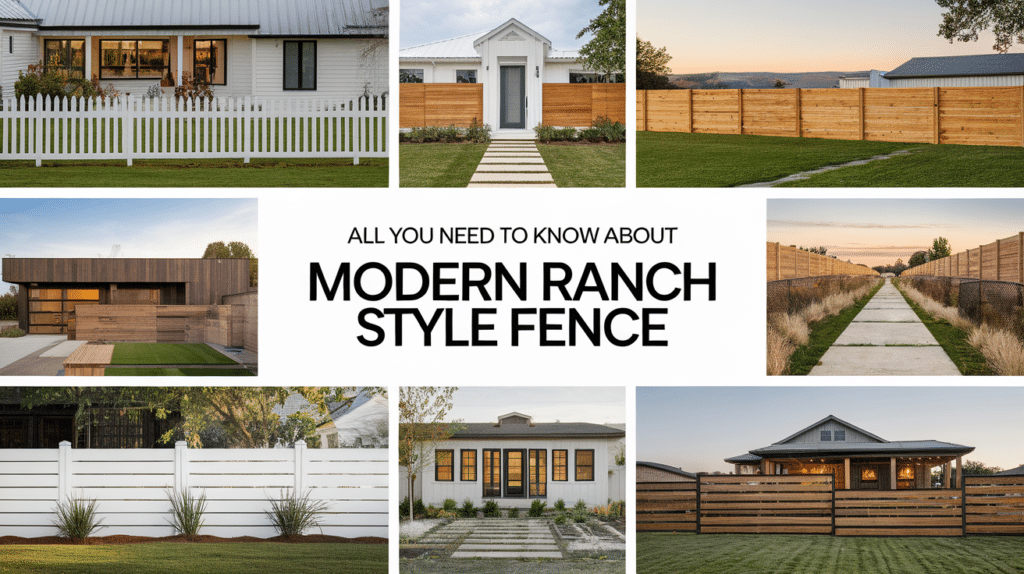Looking to upgrade your property with a fence that’s both practical and stylish? Modern ranch fencing might be exactly what you need.
In this guide, I’ll explain everything about modern ranch-style fences—from materials and costs to DIY installation tips and design ideas that complement today’s homes.
The right fence does more than mark boundaries – it transforms your property’s entire look.
You’ll know:
- How modern ranch fencing differs from traditional styles
- Average costs and material comparisons
- Step-by-step installation basics
- Maintenance requirements
- Design ideas for different property types
Whether you’re fencing a few acres or want that ranch aesthetic for your suburban home, this guide will help you make informed decisions without unnecessary spending.
What Is a Modern Ranch-Style Fence?
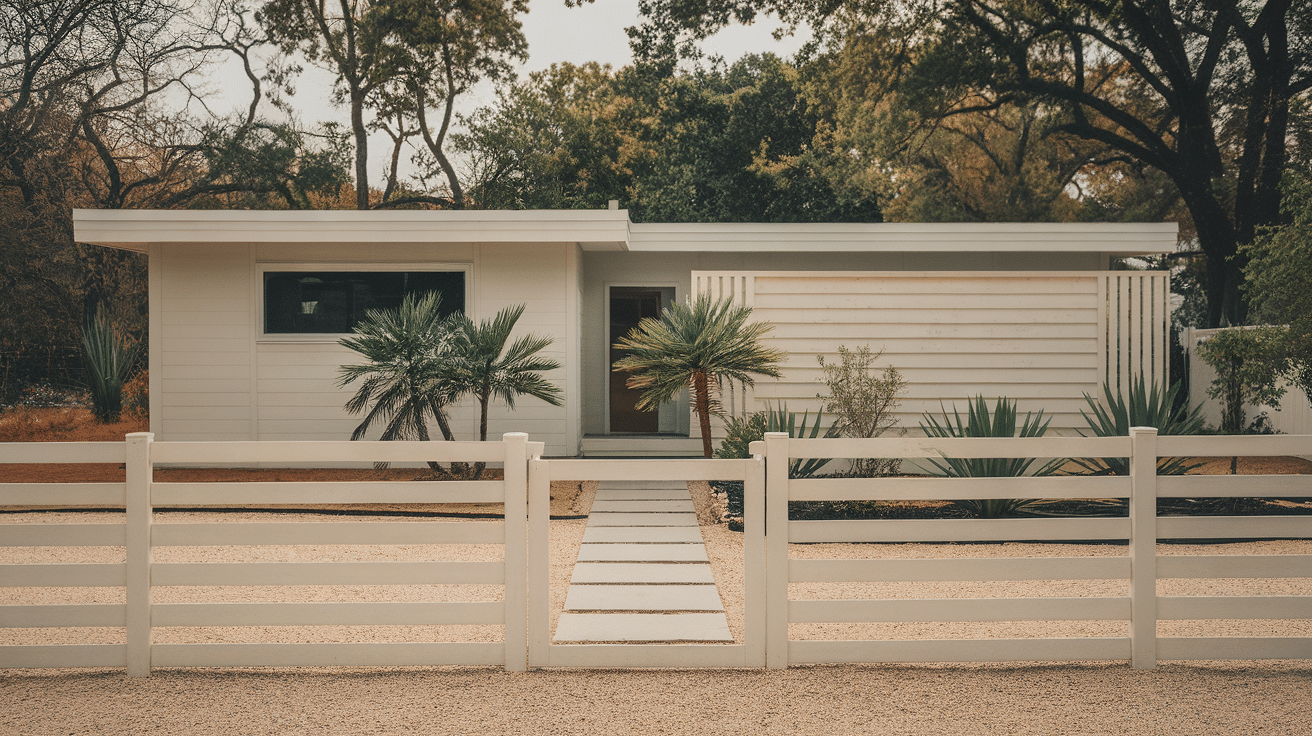
Modern ranch fencing takes the classic look of traditional ranch barriers and updates it for today’s homes. I’ve built dozens of these fences and love how they blend old-school practicality with clean, contemporary design.
At its core, these fences feature horizontal rails with wide spacing, creating an open, airy feel. Unlike the rough-hewn look of traditional ranch fences, modern versions embrace straight lines and refined finishes.
Think of it as the difference between your grandpa’s work boots and today’s comfortable, stylish footwear—the same purpose, updated approach.
You’ll typically see modern ranch fences made from:
- Rich-toned woods like cedar or redwood
- Powder-coated metal or aluminum
- Composite materials that mimic wood
- Combinations of materials (like metal posts with wooden rails)
The height varies based on your needs:
Lower fences (3-4 feet) work great for visual boundaries
Taller versions (5-6 feet) provide more privacy and security.
What makes these fences “modern” is their intentional design elements. Traditional ranch fencing was purely functional and often rough-looking. Today’s versions maintain that horizontal emphasis but add thoughtful details like capped posts, consistent spacing, and contemporary colors.
These fences work beautifully for marking property lines without blocking views. Many of my clients choose them specifically because they define space without creating a boxed-in feeling.
Benefits of a Modern Ranch Fence
The clean, horizontal lines of a modern ranch fence offer more than just good looks. I’ve installed these fences for homeowners with all kinds of properties, and they’re consistently thrilled with their versatility.
Your home’s style matters when choosing a fence. Whether you have a sleek contemporary house or a cozy farmhouse, modern ranch fencing complements both extremes and everything in between. The horizontal emphasis creates a sense of width and space.
Unlike tall privacy fences that can feel like walls, ranch fencing defines your space while keeping an open feel.
This openness serves practical purposes, too. You can easily see your surroundings, keep an eye on kids or pets, and enjoy unobstructed views of your landscape. At the same time, the fence clearly marks your property boundaries.
Maintenance concerns are real with any outdoor structure.
Modern ranch fences offer several low-maintenance options:
- Composite materials that never need painting
- Powder-coated metal that resists rust for decades
- Treated woods that stand up to weather
I am always impressed by the durability of these fences. When properly built, they handle weather extremes from heavy snow to strong winds. I’ve installed them for clients with large dogs, and with the right spacing, they keep pets contained without feeling cage-like.
You get to decide exactly how open or closed your fence appears. Want more privacy? Choose narrower gaps between rails. Prefer maximum openness? Space the rails wider apart. This customization makes modern ranch fencing work for nearly any situation.
Types of Modern Ranch-Style Fences
Horizontal Wood Rails
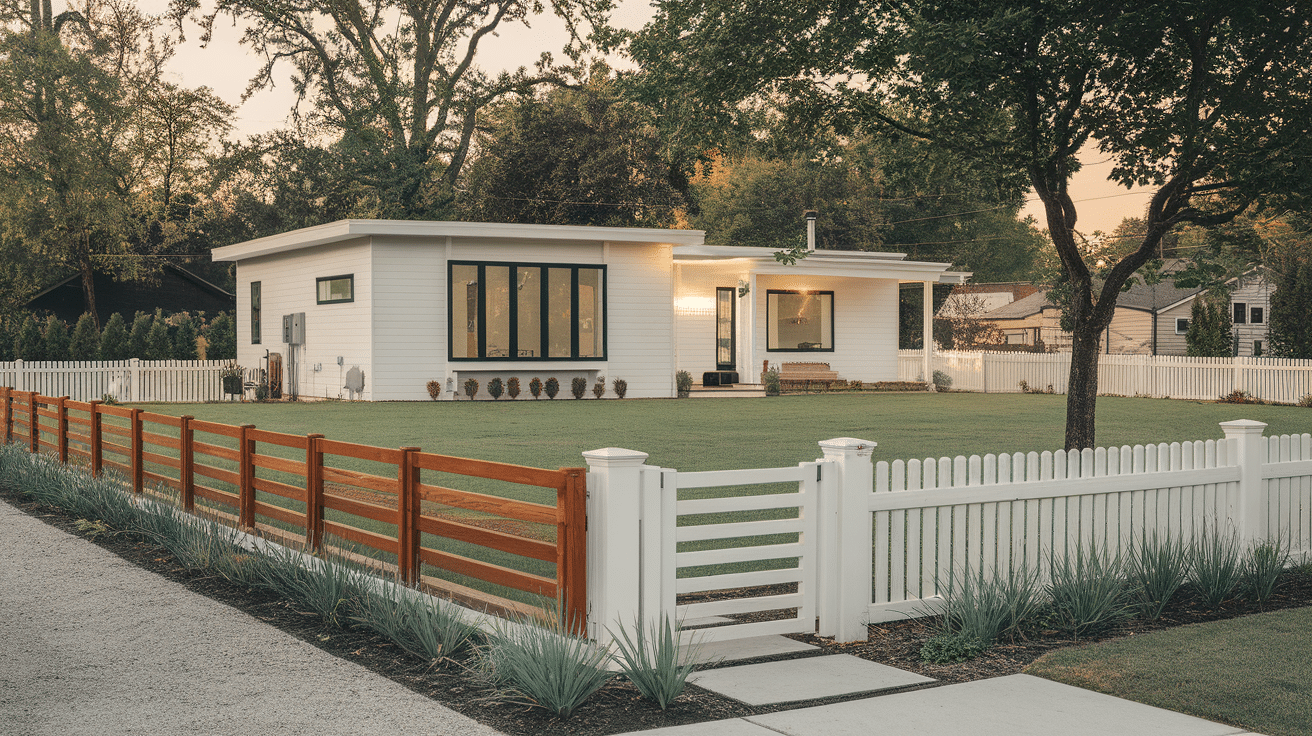
Most people picture the horizontal rail fence when thinking of ranch style. These fences feature three to five wooden rails running parallel to the ground, connected to posts spaced 6-8 feet apart.
I love how these look with clear-sealed cedar or redwood. The natural grain adds warmth, while the horizontal lines create a clean, contemporary feeling. These work particularly well on sloped properties where vertical pickets would create awkward angles.
Wood has a warmth that no other fencing material quite matches.
Cedar and redwood naturally resist insects and rot, but treated pine offers a more budget-friendly option. Expect to pay approx. $15-25 per linear foot for quality installation.
Mixed Materials
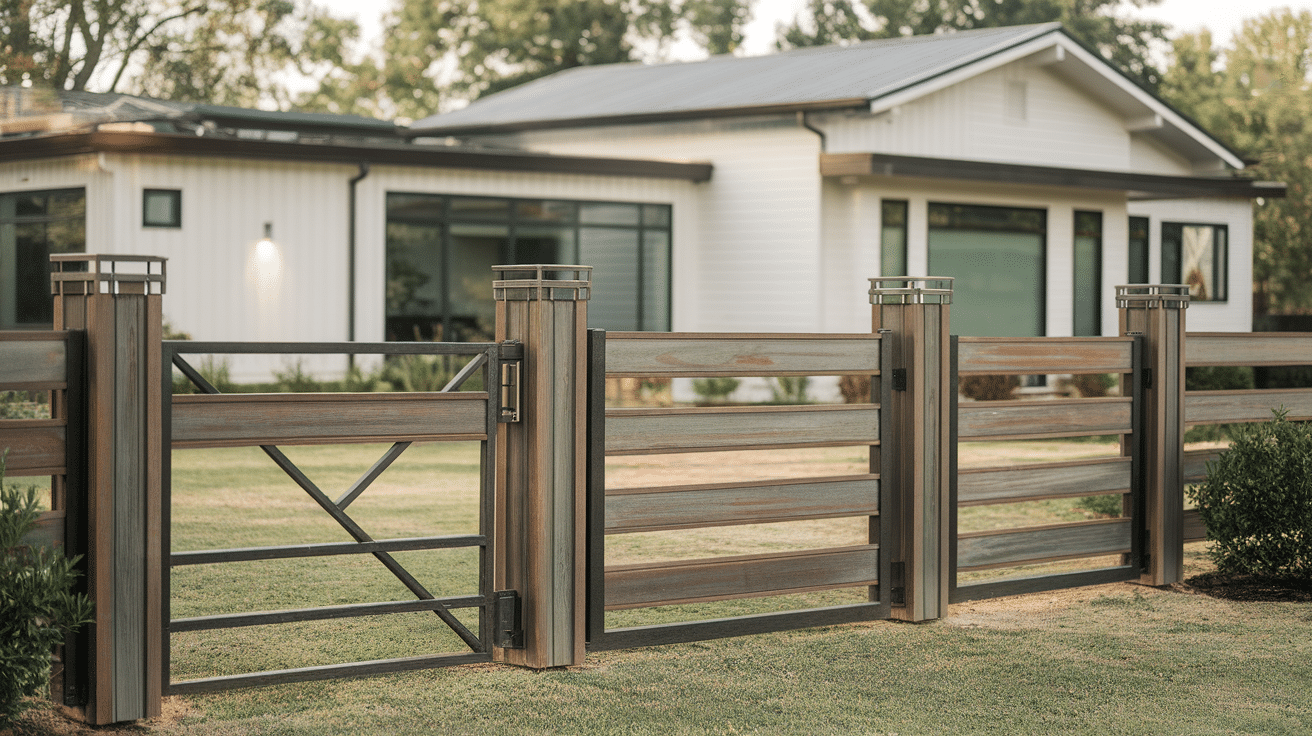
Combining wood with metal creates striking visual interest. I’ve built many fences using black metal posts with wooden rails or metal frames with wooden inserts.
The contrast between materials gives these fences a distinctly modern edge. They’re perfect for homes with industrial or contemporary design elements.
These combinations often last longer than all-wood fences. The metal components provide structural strength, while the wood delivers warmth and natural beauty. Maintenance is simplified since only the wood portions need regular care.
Expect costs to be around approx. $25-40 per linear foot, depending on your material choices.
Cable or Wire Rail Fencing
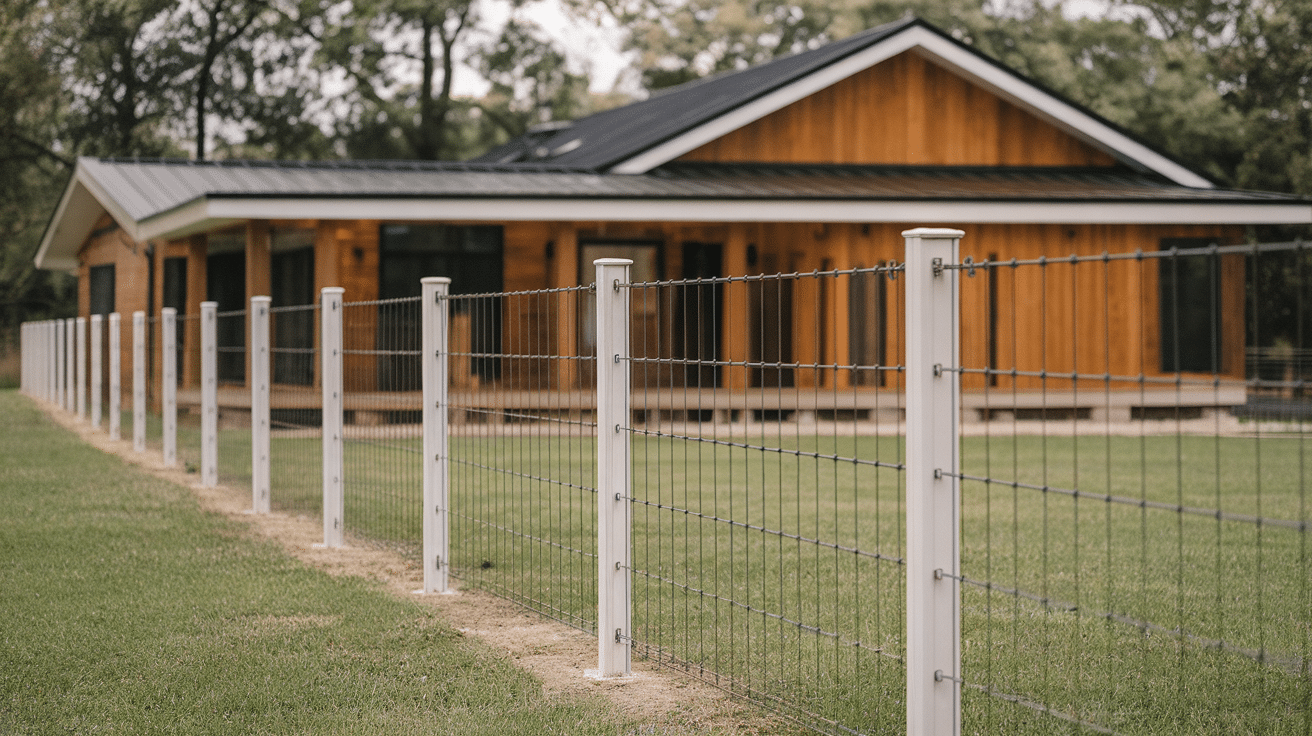
Cable rail systems offer the most minimalist approach. These use tensioned steel cables run horizontally between metal or wooden posts.
The nearly invisible profile makes these perfect for preserving views while still creating a boundary. They’re particularly popular for properties with scenic surroundings.
Cable fencing requires precise installation with proper tensioning. I always recommend professional installation unless you have experience with these systems.
While they look simple, cable systems often cost approx. $30-50 per linear foot due to the specialized hardware and installation requirements.
Split Rail with Modern Touches
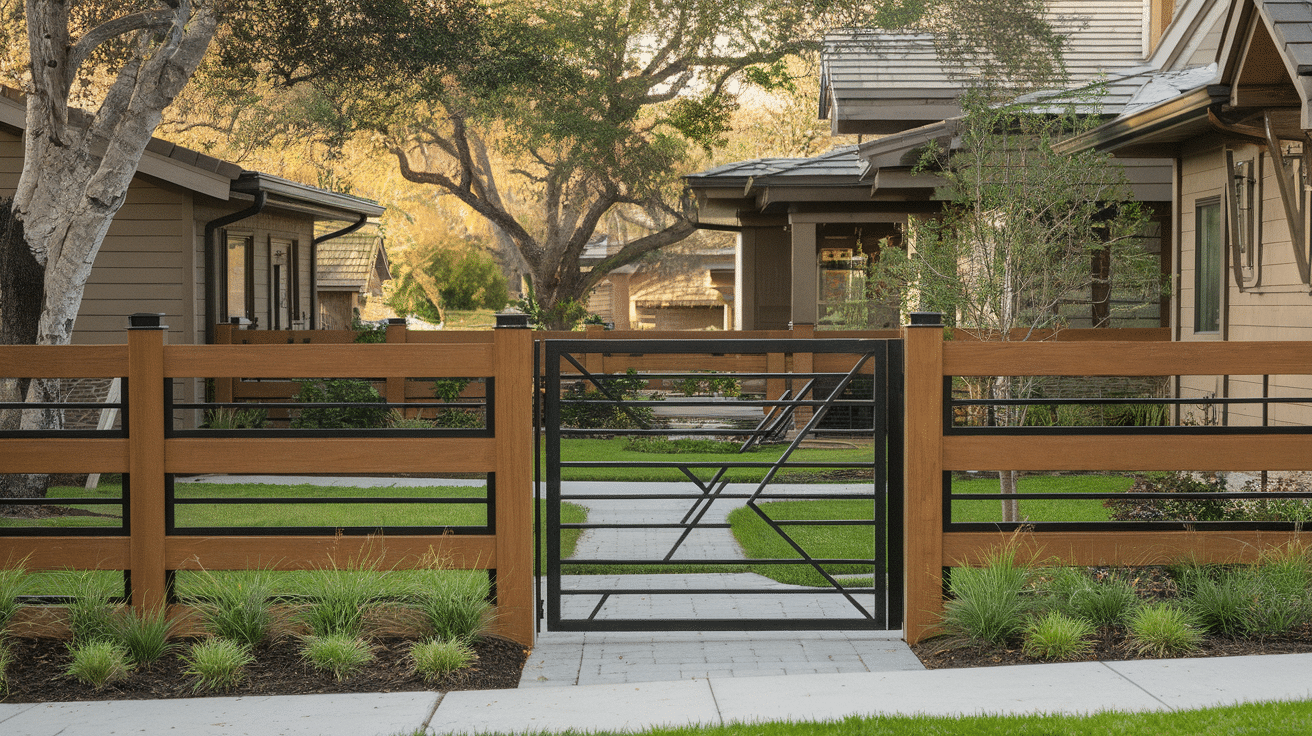
Traditional split rail gets a contemporary update with uniform rails and consistent spacing. Unlike the rustic, irregular look of classic split rail, modern versions use milled lumber for a cleaner appearance.
These fences create a perfect middle ground between rustic and refined. They work beautifully for country properties, hobby farms, or homes with farmhouse-inspired architecture.
The chunky rails and posts make these fences substantial without feeling imposing. They typically cost approx. $12-20 per linear foot, making them one of the more affordable options.
Privacy Add-ons
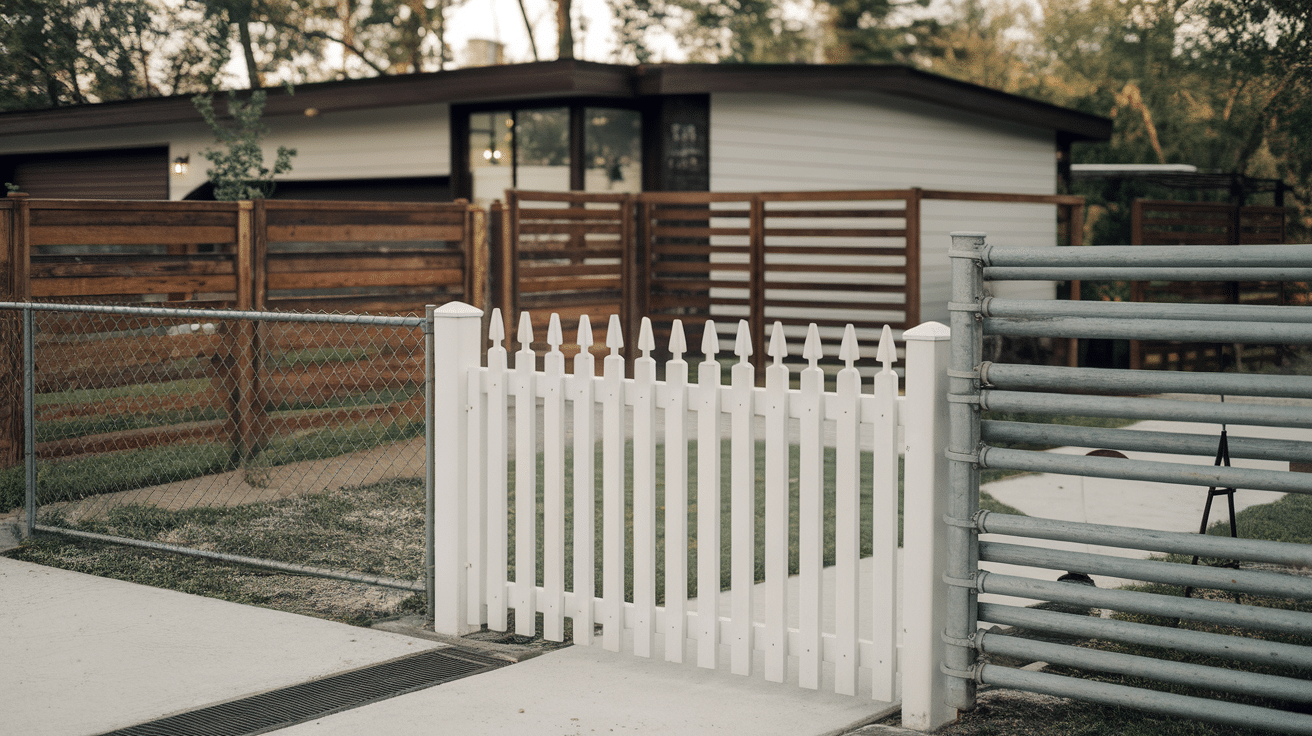
Basic ranch fencing can be modified for more privacy without losing its character. I often add slatted inserts, decorative panels, or partially solid sections to create privacy where needed.
Growing vines or ornamental grasses along the fence adds natural screening. Alternating solid and open sections create rhythm and interest while providing strategic privacy.
These modifications typically add $5-15 per linear foot to your base fence cost but offer tremendous flexibility in balancing openness with privacy needs.
How to Choose the Right Fence for Your Property
Start by being crystal clear about why you want a fence. Too many homeowners choose the wrong style because they don’t consider their main purpose first.
Ask yourself what problem you’re trying to solve. Are you keeping dogs in? Creating a visual boundary? Adding curb appeal? Each purpose might lead you toward a different design.
For containing pets or livestock, you’ll need appropriate spacing between rails. Large dogs might require closer rail spacing, while horses respect even widely spaced rails once they’re trained to the fence line.
Your fence’s primary job dictates its design more than any other factor.
Material choice affects everything from appearance to longevity:
- Wood offers natural warmth but requires regular maintenance
- Metal provides decades of service with minimal upkeep
- Composite materials resist rot and insects but cost more upfront
- Mixed materials can give you the best of multiple options
Look at your home’s architectural style before deciding—a sleek, contemporary house pairs beautifully with metal or cable rail systems. Craftsman or farmhouse styles often look best with wooden ranch fencing.
Your budget matters, but consider the long view. I’ve watched clients choose the cheapest option only to spend more on replacements later. Quality materials might cost more upfront but often save money over time.
Factor in these costs:
- Materials (typically $10-50 per linear foot)
- Installation ($15-30 per linear foot if hiring professionals)
- Long-term maintenance (staining, painting, repairs)
- Potential property value increase
Be honest about how much maintenance you’ll actually do. If you know you won’t keep up with wood staining every couple of years, metal or composite might be worth the higher initial investment.
Always check local regulations before buying materials. Many neighborhoods have height restrictions, setback requirements, or material limitations. I’ve had clients purchase materials only to discover their HOA wouldn’t approve the design.
Conclusion
Modern ranch fencing offers the perfect balance of style and function for today’s homes. With clean horizontal lines and versatile design options, these fences create boundaries without the boxed-in feeling of traditional privacy fences.
Whether you choose classic wooden rails, sleek metal and cable systems, or low-maintenance composite materials, the right ranch fence adds instant character to your property. Its open design preserves views while still clearly defining your space.
When selecting your design, consider your specific needs—pets, privacy, or pure aesthetics. Take time to explore different materials and styles to find the perfect match for your home’s architecture and maintenance preferences.
A well-designed ranch fence isn’t just a boundary; it’s a finishing touch that frames your property and creates lasting curb appeal. It’s an investment that pays dividends in both function and beauty.
Frequently Asked Questions
How Much Does a Modern Ranch-Style Fence Typically Cost?
Modern ranch fencing costs vary widely based on materials and complexity. Expect to pay $15-25 per linear foot for wooden horizontal rail fences, $25-40 for metal and wood combinations, and $30-50 for cable rail systems.
How Do I Maintain a Wooden Ranch Fence to Ensure It Lasts?
Clean your wooden ranch fence annually with a gentle power wash or garden hose and soft brush to remove dirt and debris. Apply a quality sealer or stain every 2-3 years (or more often in harsh climates).
Are Modern Ranch-Style Fences Good for Containing Pets?
Yes, but design modifications are often necessary. Standard ranch fencing with 3-4 widely spaced horizontal rails works for large dogs and livestock, but smaller dogs may squeeze through gaps.
Can I Install a Modern Ranch Fence on A Sloped Yard?
Yes, ranch-style fencing works exceptionally well on slopes using either the “stepped” or “racked” method. The stepped approach maintains horizontal rails but steps each section down the hill, creating a stair-like appearance.
How Do I Choose Between Wood, Metal, and Composite Materials for My Ranch Fence?
Choose based on your priorities: Wood (cedar, redwood, or pressure-treated pine) offers natural beauty and moderate cost but requires regular maintenance. Metal (aluminum or steel) provides maximum durability and minimal maintenance but typically costs more and has a more industrial appearance.

